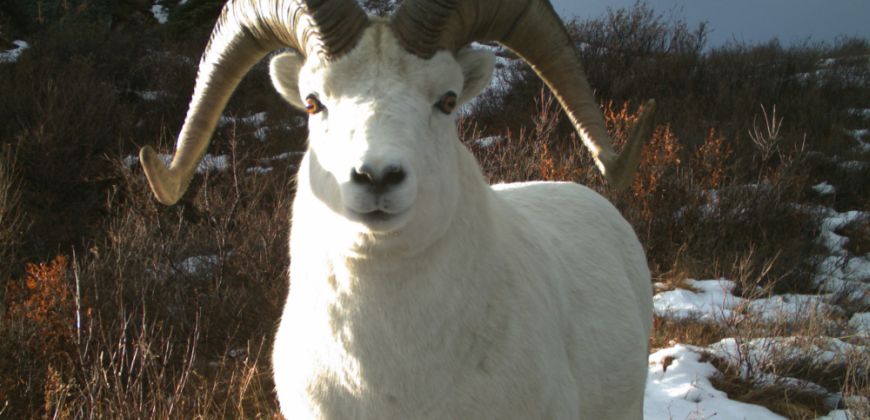
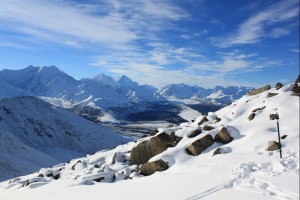 Colorado State University’s Center for the Environmental Management of Military Lands is partnering with CSU’s Warner College Fish, Wildlife and Conservation Biology Department to study Dall sheep at U.S. Army Fort Wainwright in Alaska with unique wildlife camera trapping techniques.
Colorado State University’s Center for the Environmental Management of Military Lands is partnering with CSU’s Warner College Fish, Wildlife and Conservation Biology Department to study Dall sheep at U.S. Army Fort Wainwright in Alaska with unique wildlife camera trapping techniques.
2 million photos
Jeremy Dertien, an ecology masters student in the fish, wildlife and conservation biology department, is in the midst of analyzing time-lapse movies of the more than 2 million photos collected with wildlife cameras at two areas on the installation’s firing ranges.
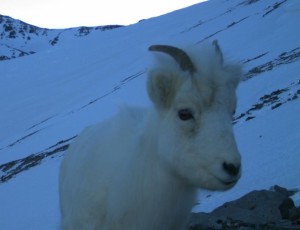 “We haven’t see these kinds of camera trapping methods employed in other studies,” he said. “Using time-lapse analysis and focusing the cameras on such large areas is fairly new to wildlife biology.”
“We haven’t see these kinds of camera trapping methods employed in other studies,” he said. “Using time-lapse analysis and focusing the cameras on such large areas is fairly new to wildlife biology.”
Charismatic Dall sheep
Tourism is Alaska’s second largest industry, according to the state’s comprehensive outdoor recreation plan, and wildlife viewing and hunting are cited as some of the most popular outdoor activities. The charismatic Dall sheep are a species of interest to both tourists and the tourism industry
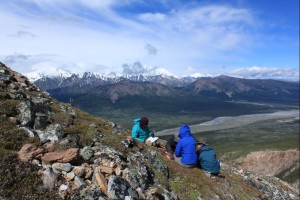 Given those circumstances, the Army wants to ensure that training exercises in the sheep’s habitats do not adversely impact the animals. Enter CEMML, which consults with the U.S. military and other federal agencies on a wide variety of environmental and cultural resources issues, including wildlife management.
Given those circumstances, the Army wants to ensure that training exercises in the sheep’s habitats do not adversely impact the animals. Enter CEMML, which consults with the U.S. military and other federal agencies on a wide variety of environmental and cultural resources issues, including wildlife management.
Monitoring in extreme conditions
To monitor the sheep, more than 50 wildlife cameras were strategically placed and operated nonstop for two full years. A photo was taken anytime the camera sensed movement and at regular intervals. The cameras operated in the extreme Alaskan conditions (temperatures of -40 to -50 degrees Fahrenheit in the winter) thanks to advances in battery technology.
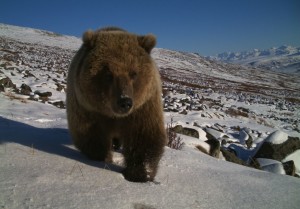 Dertien, along with Alaska-based CSU/CEMML staff, entered the training areas and traveled throughout the sites by helicopter, in some cases, during a small window in the training season to install cameras. They came back again the following summer to download photos and perform maintenance on the cameras.
Dertien, along with Alaska-based CSU/CEMML staff, entered the training areas and traveled throughout the sites by helicopter, in some cases, during a small window in the training season to install cameras. They came back again the following summer to download photos and perform maintenance on the cameras.
“There were a number of sites where cameras were damaged by grizzly bears,” Dertien said. “It was interesting to see the last few minutes of a camera’s life while a bear was playing with it.”
Challenging environment
Dertien said the environment was challenging to work in, “but also pretty cool. We were able to work late into the night because the area is so far north. I didn’t experience darkness for a month.”
Dertien also encountered grizzly bears and even found evidence of the bears eating Dall sheep. “It’s kind of surreal to find your subject species in the scat of predators in the area. That was the first time I ‘saw’ a Dall sheep on my study site.”
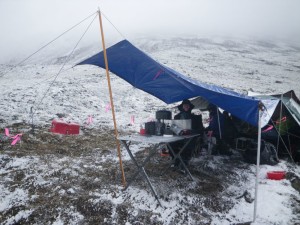 No adverse effects
No adverse effects
The good news for the Army is that the study did not find any adverse effects of training at the sites as the Dall sheep don’t appear to be using the areas during periods of active training.
Other interesting findings keep coming up as well. So far Dertien has observed 16 different mammal species in the analysis, including caribou, collared pika, wolf, red fox, Canada lynx and even the highly elusive wolverine. The use of regular interval pictures has been so successful that data from the study will also be used to estimate how nine other mammals and ptarmigan are utilizing the habitats in the study areas.